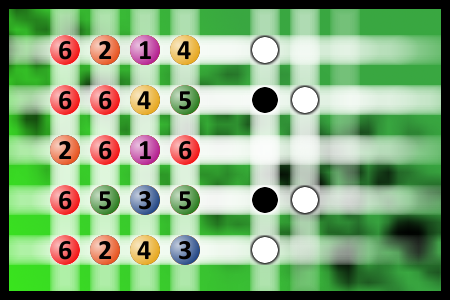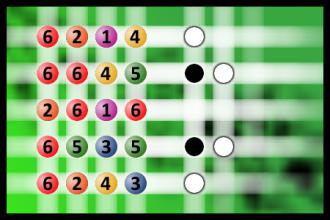Find the right combination
The computer chose a secret code (sequence of 4 digits from 1 to 6). Your goal is to find that code. Black circles indicate the number of hits on the right spot. White circles indicate the number of hits on the wrong spot.Correct answers: 60
The first user who solved this task is James Lillard.
#brainteasers #mastermind

A little boy sits on Santa's
A little boy sits on Santa's lap.
Santa says, "I bet I know what you want for Christmas," and with his finger he taps the boys nose with every letter he spells "T-O-Y-S."
The little boy thinks a second and says, "No, I have enough toys."
Santa replies once again tapping the boys nose with every letter, "C-A-N-D-Y."
Again the little boy thinks a second and says, "No, I have all kinds of candy."
"Well what would you like for Christmas?" Santa asks.
The little boy replies, tapping Santa on the nose, "P-U-S-S-Y, and don't tell me you don't have any because I can smell it on your finger!"
Santa says, "I bet I know what you want for Christmas," and with his finger he taps the boys nose with every letter he spells "T-O-Y-S."
The little boy thinks a second and says, "No, I have enough toys."
Santa replies once again tapping the boys nose with every letter, "C-A-N-D-Y."
Again the little boy thinks a second and says, "No, I have all kinds of candy."
"Well what would you like for Christmas?" Santa asks.
The little boy replies, tapping Santa on the nose, "P-U-S-S-Y, and don't tell me you don't have any because I can smell it on your finger!"

